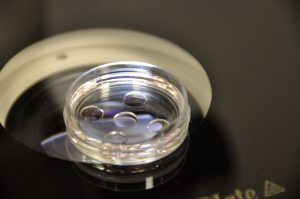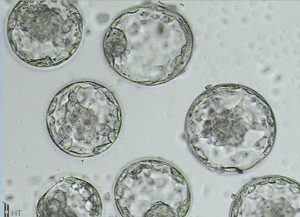Assisted Hatching
Assisted Hatching (AH) is a procedure done in our laboratory that uses a laser to make a small hole in the zona pellucida (the “shell” surrounding the embryo). Many studies have proven that AH improves success rates. This procedure can be done at several different points in the IVF cycle:
AH is done at the time of embryo transfer for:

- Patients that are 38 years or older.
- Patients that have failed to become pregnant in at least two previous ART attempts.
- Embryos that have an abnormally thick zona (which may inhibit implantation). Depending on the day of transfer, the zona is either thinned out or breached completely.
- Patients who are having frozen embryos transferred. This is done for every FET.
AH is done at the time of embryo cryopreservation. This is a technique that has been widely used for over a decade. The embryo is collapsed with the laser by making a small hole in the zona pellucida. The reason we collapse embryos before freezing them is to make sure that the fluid in the cavity of the embryo is removed, which lets the embryo fully compact inside the zona.
 Embryos that are biopsied for pre-implantation genetic testing (PGT) can be hatched on Day 3 of embryo growth. This is done so that the embryo hatches out of the zona on Day 5 when we are ready to perform the biopsy. The laser is used again during the biopsy to detach a few cells from the embryo.
Embryos that are biopsied for pre-implantation genetic testing (PGT) can be hatched on Day 3 of embryo growth. This is done so that the embryo hatches out of the zona on Day 5 when we are ready to perform the biopsy. The laser is used again during the biopsy to detach a few cells from the embryo.
